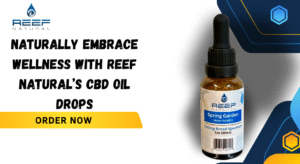
Pigmentation is a common skin concern that affects people of all ages and skin types. Whether it’s due to sun damage, hormonal changes, or genetic factors, pigmentation can alter the even tone of the skin and impact one’s confidence. This article explores whether pigmentation can be completely erased and delves into the various options available for effective pigmentation treatment.
What is Pigmentation?
Pigmentation refers to the coloring of the skin. The skin gets its color from a pigment called melanin, produced by cells known as melanocytes. When these cells are damaged or unhealthy, melanin production can become irregular, leading to dark patches, uneven skin tone, or discoloration.
Common Types of Pigmentation
Understanding the type of pigmentation is essential before starting any pigmentation treatment. Here are the most common types:
1. Melasma
Melasma appears as brown or gray-brown patches, usually on the face. It’s often triggered by hormonal changes, especially during pregnancy.
2. Sunspots
Also called age spots or liver spots, these are flat, brown spots that appear on sun-exposed areas like the face, hands, and shoulders.
3. Post-Inflammatory Hyperpigmentation (PIH)
This occurs after skin inflammation or injury, such as acne or eczema.
4. Freckles
Freckles are small brown spots usually caused by sun exposure and are more common in people with lighter skin.
5. Lip Pigmentation
This includes darkening or uneven tone of the lips and can be caused by smoking, dehydration, sun exposure, or allergic reactions. Many people seek lip pigmentation treatment to restore natural lip color.
Can Pigmentation Be Completely Erased?
The answer depends on several factors:
- Type and cause of pigmentation
- Skin type
- Treatment approach
- Consistency and aftercare
In many cases, pigmentation treatment can significantly reduce the appearance of dark spots, uneven skin tone, and discoloration. While complete erasure might not always be possible, especially in stubborn cases like melasma, advanced treatments have shown remarkable improvement for many individuals.
Popular Methods of Pigmentation Treatment
Here are some of the most commonly used and effective methods for treating pigmentation:
1. Topical Creams and Serums
These include products containing ingredients like:
- Vitamin C – Brightens the skin and reduces melanin production.
- Niacinamide – Fades dark spots over time.
- Retinoids – Promote cell turnover.
- Hydroquinone – A skin-lightening agent used to reduce pigmentation.
While over-the-counter creams are available, consistency is key. They are best for mild pigmentation but may take weeks or months to show visible results.
2. Chemical Peels
Chemical peels use acids like glycolic acid, salicylic acid, or lactic acid to exfoliate the skin’s surface. They help in peeling away the top layer of the skin where pigmentation resides, revealing fresher, more even-toned skin beneath.
Chemical peels are effective for:
- Acne marks
- PIH (Post-Inflammatory Hyperpigmentation)
- Sunspots
However, results vary based on the strength and depth of the peel.
3. Laser Treatment for Pigmentation
Laser treatment for pigmentation is considered one of the most advanced and effective options for reducing stubborn pigmentation. It works by targeting melanin deposits in the skin and breaking them down.
Popular types of lasers used include:
- Q-switched lasers
- Fractional lasers
- IPL (Intense Pulsed Light)
Laser treatment for pigmentation is suitable for deeper and more persistent types of discoloration, such as melasma or sunspots. Multiple sessions are usually required, and results can be long-lasting with proper skincare maintenance.
4. Microdermabrasion
This is a mechanical exfoliation method that gently removes the outermost layer of dead skin. It’s suitable for mild pigmentation and improves skin texture and tone. It is a less aggressive treatment compared to chemical peels and lasers.
5. Natural Remedies
Some people prefer natural options such as:
- Aloe vera
- Turmeric
- Lemon juice (with caution)
- Green tea extracts
While these may offer slight improvement over time, they are generally not as effective as professional treatments and require consistency and patience.
What About Lip Pigmentation?
Lip pigmentation treatment is gaining popularity as more people seek even-toned, pink, or naturally healthy-looking lips.
Causes of Lip Pigmentation:
- Smoking
- Sun exposure
- Dehydration
- Allergies to lip products
- Hormonal changes
Treatments for Lip Pigmentation:
- Lip exfoliation with scrubs
- Use of lip balms with SPF
- Natural oils like almond or coconut oil
- Laser treatment for pigmentation (specifically targeted for lips)
- Specialized lip pigmentation treatment options like microneedling or lightening peels
Though lip pigmentation treatment may not completely erase deep pigmentation in every case, regular care and professional intervention can bring noticeable results.
Tips to Prevent Pigmentation from Returning
Whether you opt for creams, peels, or laser treatment for pigmentation, prevention is essential to maintain results.
1. Use Sunscreen Daily
UV exposure is one of the primary causes of pigmentation. Always use a broad-spectrum sunscreen with SPF 30 or higher.
2. Stay Hydrated
Drinking plenty of water keeps your skin hydrated and helps flush toxins out of your body.
3. Avoid Picking or Scratching the Skin
This can lead to PIH, especially in acne-prone areas.
4. Use Gentle Skincare Products
Avoid harsh scrubs or products with high alcohol content that can irritate the skin and worsen pigmentation.
5. Follow a Consistent Routine
Maintaining a skincare routine tailored to your skin’s needs can prevent new pigmentation from forming.
Are the Results Permanent?
In many cases, pigmentation treatment offers long-lasting improvement, but it’s not always permanent. Sun exposure, hormonal changes, and skin trauma can lead to new pigmentation. Hence, aftercare and preventive steps are essential for maintaining clear, even-toned skin.
Laser treatment for pigmentation may offer longer-lasting results, especially when combined with good skincare habits and protection from UV rays. However, periodic maintenance sessions might be required for some individuals.
Is Pigmentation Treatment Safe?
Most pigmentation treatment options are considered safe when done properly and with care. However, everyone’s skin is different. It’s important to monitor how your skin reacts and to avoid overuse of strong ingredients or frequent exfoliation, which can damage the skin barrier.
Laser treatment for pigmentation and lip pigmentation treatment should be spaced out appropriately to allow your skin to heal and regenerate effectively.
Conclusion
While complete erasure of pigmentation isn’t guaranteed for everyone, today’s pigmentation treatment methods have come a long way. From simple topical creams to advanced laser treatment for pigmentation, there are options to suit all skin types and levels of discoloration. For those concerned about discolored lips, modern lip pigmentation treatment options can offer impressive results with proper care.
With consistency, patience, and preventive steps, many people can achieve brighter, more even-toned skin and restore their natural beauty.




